The Siberian Brook lamprey is one of the unique fish found in Russia. At first glance, they have a shape similar to lampreys, but they are not jawed fish. Although it has only recently appeared in Vietnam, the Siberian Brook lamprey is sought after by many people because of its high nutritional value.
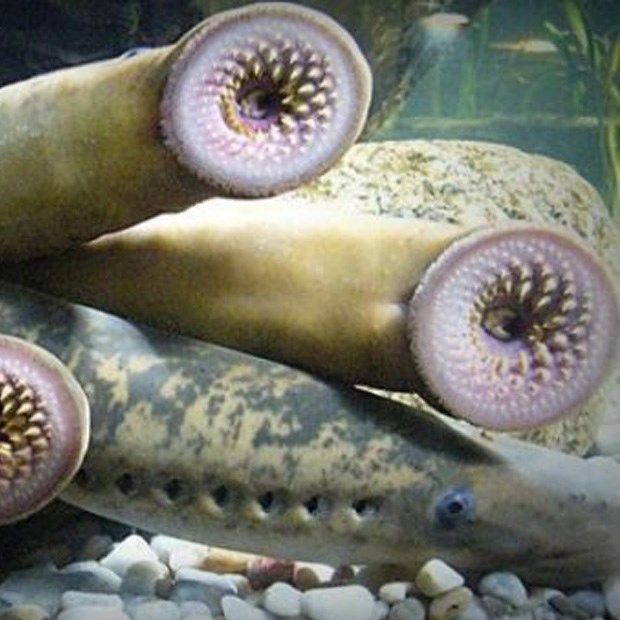
General information about Siberian Brook lamprey.
The Siberian Brook lamprey, also known as the Ninja fish, has been present on Earth for over 300 million years. This fish was first discovered in the Siberia Brook stream in Russia, hence its name, Siberian Brook lamprey. This ancient sucker fish is one of the few species that have been able to survive on Earth until today without becoming extinct. Therefore, everything from its appearance, name, and origin is interesting and unique. Many survival traits from ancient times still exist in this smooth-skinned fish species to this day.
When imported to Vietnam, the Siberian Brook lamprey is called by three different names: in the South, it is commonly known as the Ninja fish, while in the North, it is called the Siberian Brook lamprey, and in the Central region, it is called the fish with a hidden head and a protruding tail. The variety of names is also a highlight that makes this fish species from Russia more special and impressive.
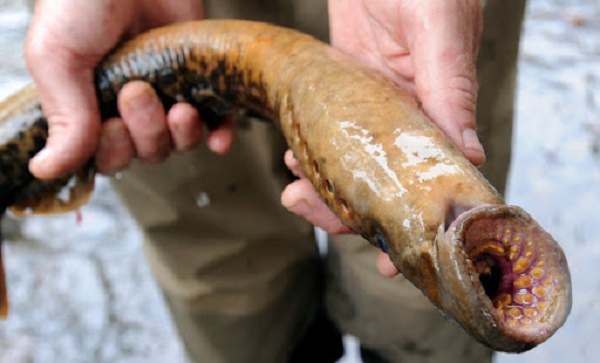
Habitat
The Siberian Brook lamprey (Lethenteron kessleri) is a freshwater fish species that is commonly found in the streams and rivers of lowland Siberian Russia, including the famous hot spring stream of Siberia. Additionally, it can also be found in many lakes, rivers, and streams in China, Japan, Korea, and Mongolia.
The Siberian Brook lamprey thrives in freshwater environments with mild climates and average water temperatures ranging from 5°C to 25°C. It is a non-migratory species and is well adapted to living in these types of aquatic habitats.
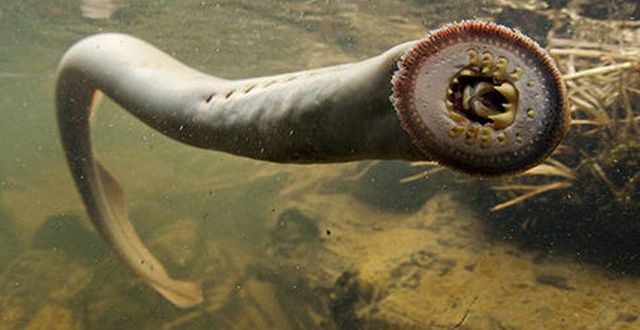
Level of danger
At first glance, the outward appearance of the Siberian Brook lamprey may resemble that of an eel, which can cause many people to be cautious and worried. Not to mention its circular mouth, which is wide and reveals sharp teeth that help it hunt for prey as well as protect it from potential dangers. However, it is not a dangerous fish species.
If we overlook the intimidating appearance and provide a more accurate evaluation, we can see that this fish species is actually very beneficial to our lives. It has the ability to clean up dead fish, shrimp, crabs, and other debris on the riverbeds and lake bottoms, helping to purify the water environment and reduce some of the risks of water pollution.
Therefore, the Siberian Brook lamprey is nicknamed the “tank cleaner” or “janitor” of the rivers and lakes where they live.
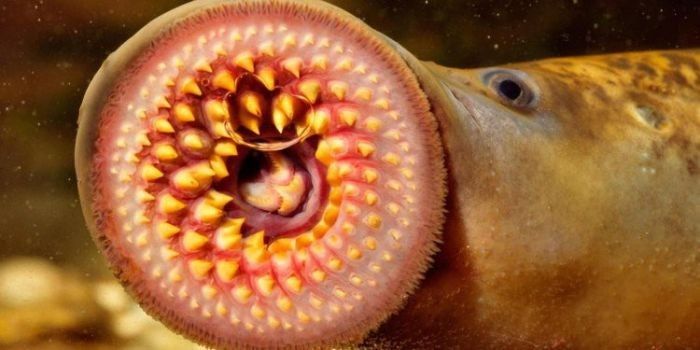
In addition, the Siberian Brook lamprey also has many nutrients that are very good for human health, so it is often processed richly with many recipes to make extremely attractive dishes. Therefore, this fish species is currently highly sought after.
Characteristics and structure of Siberian Brook lamprey
The Siberian Brook lamprey stands out with some structural characteristics as follows:
Shape, appearance
- The appearance of the Siberian Brook lamprey looks very similar to an eel, but it does not belong to the eel family, and its external structure has been evaluated as special, unlike other normal fish species.
- The Siberian Brook lamprey has a relatively long body, with an adult fish capable of reaching a maximum length of 26cm.
- They have smooth, shiny skin and no scales.
- The body of this fish is not supported by bones, but only by white mineral cartilage that runs along its body. This cartilage serves to support and resist the Siberian Brook lamprey, helping their body to be lighter and more flexible, suitable for their agile lifestyle.
- Moreover, the Siberian Brook lamprey also has a special head, which is usually round in shape and has a certain grip on objects or other fish. At the head of this fish species, there is a large round hole that seems to be able to suck everything through it.
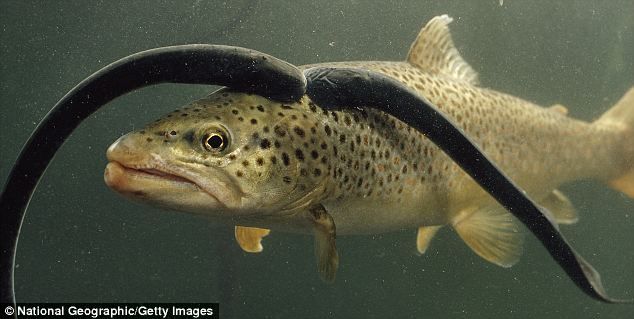
Color of the Siberian Brook lamprey
The Siberian Brook lamprey has a diverse range of colors, such as brown, pink, white, and black, on its back and belly. The diverse color changes are explained by the need to adapt to different, specific living environments. This “ugly” fish is sure to surprise those who want to learn about it, as it brings a richness that is full of unexpected things.
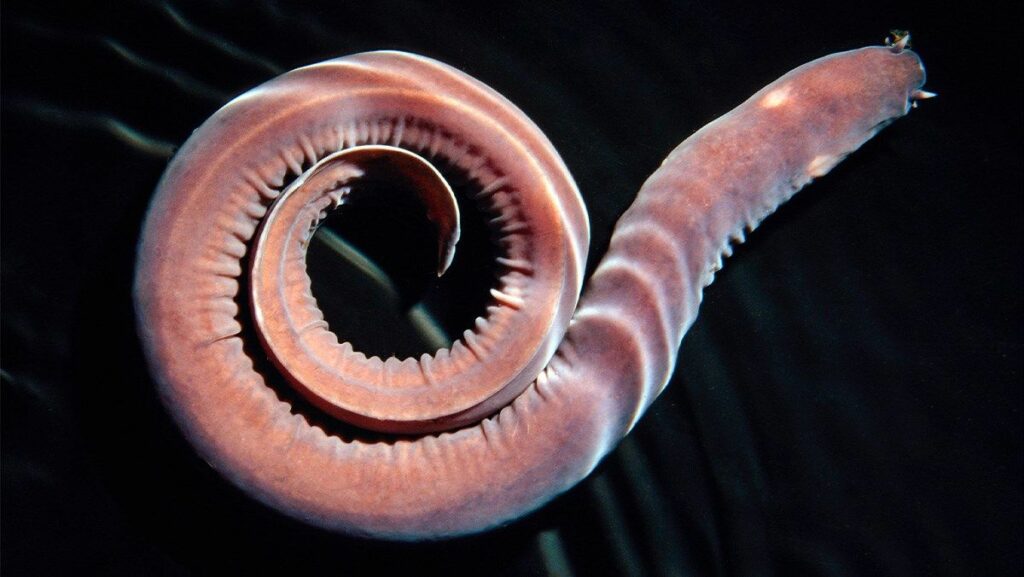
Survival characteristics
Siberian Brook lamprey has the ability to live as a parasite on some other fish species thanks to the special structure of its mouth and sucker teeth, which helps it to cling tightly to other fish. However, the Siberian Brook lamprey is not classified as a parasite, and its behavior is compared to that of a leech.
In addition, the body of the Siberian Brook lamprey often secretes a lot of mucus in a short period of time. Especially when faced with danger, they can secrete liters of mucus. This is a unique characteristic of this fish species that helps them survive and protect themselves from other dangerous animals, easily maneuvering to avoid enemies or find food.

Reproductive characteristics of the Siberian Brook lamprey
The Siberian Brook lamprey has the ability to attract mates through its thermoregulatory organ. This fish species has adipose cells that help generate heat. However, heat transfer is not efficient in water.
According to studies on the reproductive behavior of the Siberian Brook lamprey, initially the male uses stimulants or chemical signals to attract females from a distance. Then, when they come into contact, they are stimulated to reproduce through heat.
During the time when two fish come into contact with each other, the male Siberian Brook lamprey uses its mouth to attach to the female’s head and then forcefully release eggs and sperm into the water. These gametes usually nest in the depressions of rocks or pebbles, which the female fish digs out with its tail.

According to scientists, Siberian Brook lamprey die after laying eggs. Therefore, they usually use all their energy to ensure a successful mating process.
In summary, the above article has provided readers with useful information about the unique Siberian Brook lamprey. Hopefully, it will be helpful to you in exploring the fascinating nature. Please share the article widely with others!








